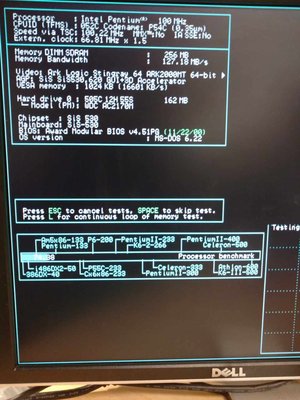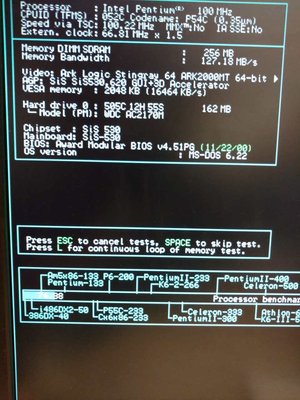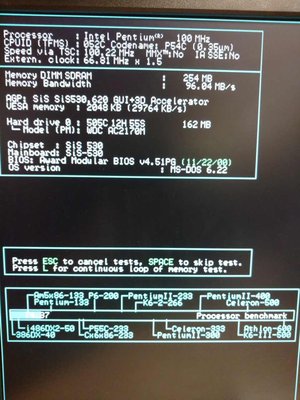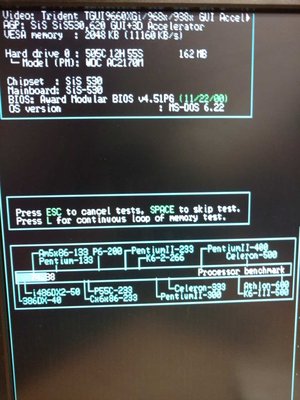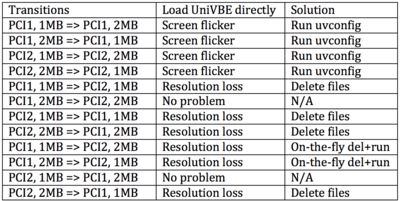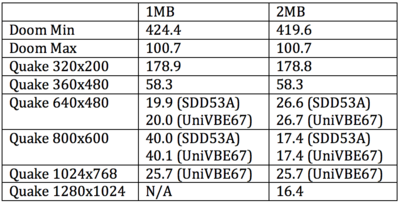Reply 20 of 32, by lazibayer
- Rank
- Oldbie
wrote:Just to be clear, the 64-bit cards are not using memory interleaving. With 1MB installed, these cards are technically crippled by a 32-bit memory bus. When 2MB is installed, the memory data path is running at full 64-bit capacity. It's not to say that a 64-bit card couldn't be designed to use interleaving (effectively 128-bit), just that nobody ever bothered to make one.
There are only a few 32-bit VGA chips I am aware of that use memory interleaving. One is the Tseng ET4000W32i/p, and the other is the S3 805i. Neither were high-end products at time of release. Memory interleaving does not make the board truly 64-bit, but is said to provide up to 85% of the bandwidth of a 64-bit board. As far as I know memory interleaving was a trick that manufacturers used to cut down on development/production costs while remaining somewhat competitive with actual 64-bit products.As for an explanation why running 2MB boards with only 1MB installed does not seem to impact DOS performance, I am led to believe that perhaps the VGA core is somehow unable to take advantage of the extra features provided by 64-bit and 32-bit interleaved VGA cards. At least according to documentation I read for the ARK1000 (32-bit) and 2000PV(64-bit) documentation, both chips have an identical VGA core. It might have to do with the way that DOS accesses VGA memory through a 64kb window in the UMB region.
wrote:It might also be that through PCI only 32 bit at a time is transferred and typical DOS stuff uses a PIO like approach with e.g. REP STOSD to VGA RAM. (If the graphics RAM internal bandwidth is higher than the PCI transfer speed.) So 64 bit memory might start playing a role if you do BitBlt from VRAM to VRAM. But that is all part of the 2D windows acceleration...
I mean vspeed bench goes up to 32 bit accesses only and does not bother testing with 64 bit accesses probably because you wouldn't see a difference anyway as the 64 bit would be split up to two 32 bit accesses.Another point is likely that a 64 bit memory data path on the graphics card helps to reduce the time needed where the DAC reads, especially in demanding modes. Such that the card doesn't get much slower from programmers side. (DRAM vs. VRAM gets also important here)
I ran speedsys on those setups and here are the results.
ARK2000 1MB, 16601KB/s:
ARK2000 2MB, 16464KB/s:
SiS 530 2MB, 29764KB/s, with penalty on the system memory:
Trident 9680 2MB, 11160KB/s, the upper portion of the window was out of the screen:
Is speedsys measuring the speed between CPU and VRAM, or the speed between GPU and VRAM?
